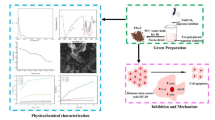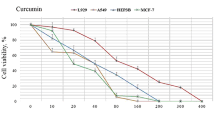Abstract
The effects of teas and related components on the proliferation and invasion of cancer cells were examined by employing both in vitro proliferation and invasion assay systems. Powdered green, oolong and black tea extracts dose-dependently inhibited proliferation and invasion of a rat ascites hepatoma cell line of AH109A but did not affect the proliferation of the normal mesentery-derived mesothelial cells (M-cells) isolated from rats; higher concentrations of powdered oolong and black teas could restrain the proliferation of another tumor cell line of L929. The AH109A cells were found to penetrate underneath the monolayer of M-cells in the presence of 10% calf serum. When each rat serum obtained at 0.5, 1, 2, 3 and 5 h after oral intubation of each tea extract was added to the culture media instead of calf serum at a concentration of 10%, both the invasion and proliferation of AH109A were significantly suppressed. These ex vivo results suggest the potential bioavailability of effective tea components in rats. Furthermore, (–)-epigallocatechin gallate, (–)-epicatechin gallate and (–)-epigallocatechin from green tea as well as the mixture of theaflavin and theaflavin gallates from black tea were shown to be the most effective components against the invasion and proliferation of AH109A. These results show that the inhibitory effects of the teas and related components against AH109A cells are due to the cell-specific and higher sensitivity of the cell line to tea components.
Similar content being viewed by others
References
Agarwal R, Katiyar SK, Zaidi SIA and Mukhtar H (1992) Inhibition of skin tumor promoter-caused induction of epidermal ornithine decarboxylase in SENCAR mice by polyphenolic fraction isolated from green tea and its individual epicatechin derivatives. Cancer Res 52: 3582–3588.
Fourneau C, Laurens A, Hocquemiller R and Cave A (1996) Radical scavening evaluation of green tea extracts. Phytotherapy Res 10: 529–530.
Hirose M, Hoshiya T, Akagi K, Takahashi S, Hara Y and Ito N (1993) Effects of green tea catechins in a rat multi-organ carcinogenesis model. Carcinogenesis 14: 1549–1553.
Ishiyama M, Shiga M, Sasamoto K, Mizoguchi M and He PG (1993) A new sulfonated tetrazolium salt that produces a highly water-soluble formazan dye. Chem Pharm Bull 41: 1118–1122.
Ishiyama M, Tominaga H, Shiga M, Sasamoto K, Ohkura Y and Ueno K (1996) A combined assay of cell viability and in vitro cytotoxicity with a highly water-soluble tetrazolium salt, neutral red and crystal violet. Biol Pharm Bull 41: 1118–1122.
Komatsu K, Yagasaki K, Miura Y and Funabiki R (1996) Modification of tumor necrosis factor and interleukin-1 productivity in macrophages from hepatoma-bearing rats by dietary proteins. Nutr Res 10: 1699–1707.
Lee MJ, Wang ZY, Li H, Chen LS, Sun Y, Gobbo S, Balentine DA and Yang CS (1995) Analysis of plasma and urinary tea polyphenols in human subjects. Cancer Epidemiol Biomark Prev 4: 393–399.
Liu X-H, Connolly JM and Rose DP (1996) Eicosanoids as mediator of linoleic acid-stimulated invasion and type IV collagenase production by a metastatic human breast cancer cell line. Clin Exp Metastasis 14: 145–152.
Mitsui T, Yamada K, Yamashita K, Matsuo N, Okuda A, Kimura G and Sugano M (1995) E1A-3Y1 cell-specific toxicity of tea polyphenols and their killing mechanism. Int J Oncology 6: 377–383.
Miura Y, Shiomi H, Sakai F and Yagasaki K (1997) Assay systems for screening food components that have anti-proliferative and anti-invasive activity to rat ascites hepatoma cells: In vitro and ex vivo effects of green tea extract. Cytotechnology 23: 127–132.
Mukai M, Shinkai K, Tateishi R, Mori Y and Akedo H (1987) Macrophage potentiation of invasive capacity of rat ascites hepatoma cells. Cancer Res 47: 2167–2171.
Namiki M and Osawa T (1986) Antioxidants/antimutagens in food. Basic Life Sci 39: 131–142.
Nanjo F, Goto K, Seto R, Suzuki M, Sakai M and Hara Y (1996) Scavenging effects of tea catechins and their derivatives on 1,1-diphenyl-2-picrylhydrazyl radical. Free Radical Biol Med 21: 895–902.
Nishida H, Omori M, Fukutomi Y, Ninomiya M, Nishiwaki S, Suganuma M, Moriwaki H and Muto Y (1994) Inhibitory effects of (−)-epigallocatechin gallate on spontaneous hepatoma in C3H/NeNCrj mice and human hepatoma-derived PLC/PRF/5 cells. Jpn J Cancer Res 85: 221–225.
Okabe S, Suganuma M, Hayashi M, Sueoka E, Komori A and Fujiki H (1997) Mechanisms of growth inhibition of human lung cancer cell line, PC-9, by tea polyphenols. Jpn J Cancer Res 88: 639–643.
Okuda T, Kimura Y, Yoshida T, Hatano T Okuda H and Arichi S (1983) Studies on the activities of tannins and related compounds from medical plants and drugs. I. Inhibitory effects on lipid peroxidation in mitochondria and microsomes of liver. Chem Pharm Bull 31: 1625–1631.
Reich R and Martin GR (1996) Identification of arachidonic acid pathways required for the invasive and metastatic activity of malignant tumor cells. Prostaglandins 51: 1–17.
Salah N, Miller NJ, Paganga G, Tijburg L, Bolwell GP and Rice-Evans C (1995) Polyphenolic flavanols as scavengers of aqueous phase radicals and as chain-breaking antioxidants. Arch Biochem Biophys 322: 339–346.
Sazuka M, Murakami S, Isemura M, Satoh K and Nukiwa T (1995) Inhibitory effects of green tea infusion on in vitro invasion and in vivo metastasis of mouse lung carcinoma cells. Cancer Lett 98: 27–31.
Shinkai K, Mukai M and Akedo H (1986) Superoxide radical potentiates invasive capacity of rat ascites hepatoma cells in vitro. Cancer Lett 32: 7–13.
Taniguchi S, Fujiki H, Kobayashi H, Go H, Miyado K, Sadano H and Shimokawa R (1992) Effect of (−)-epigallocatechin gallate, the main constituent of green tea, on lung metastasis with mouse B16 melanoma cell line. Cancer Lett 65: 51–54.
Valcic S, Timmermann BN, Alberts DS, Wachter GA, Krutzsch M, Wymer J and Guillen JM (1996) Inhibitory effect of six green tea catechins and caffeine on the growth of four selected human tumor cell lines. Anti-Cancer Drugs 7: 461–468.
Wang ZY, Hong JY, Huang MT, Reuhl K, Conney AH and Yang CS (1992a) Inhibition of N-nitroso-diethylamine and 4-(methylnitrosamino)-1-(3-pyridyl)-1-butanone-induced tumorigenesis in A/J mice by green tea and black tea. Cancer Res 52: 1943–1947.
Wang ZY, Agarwa R, Khan WA and Mukhtarl H (1992b) Protection against N-nitrosodiethylamine and benzo(a)pyrene-induced forestomach and lung tumorigenesis in A/J mice by water extracts of green tea and licorice. Carcinogenesis 13: 1491–1493.
Rights and permissions
About this article
Cite this article
Zhang, G., Miura, Y. & Yagasaki, K. Effects of green, oolong and black teas and related components on the proliferation and invasion of hepatoma cells in culture. Cytotechnology 31, 37–44 (1999). https://doi.org/10.1023/A:1008076306672
Issue Date:
DOI: https://doi.org/10.1023/A:1008076306672




